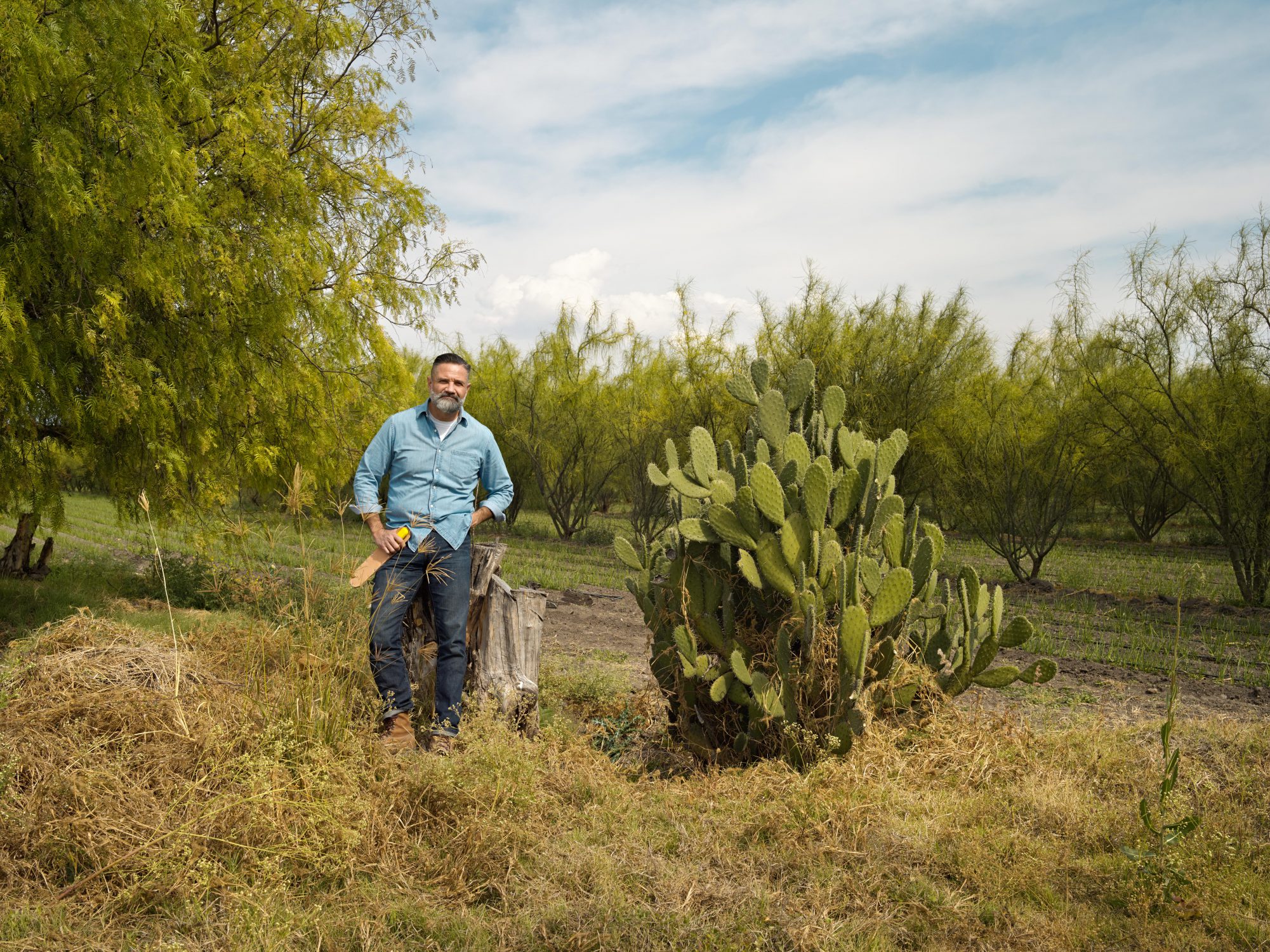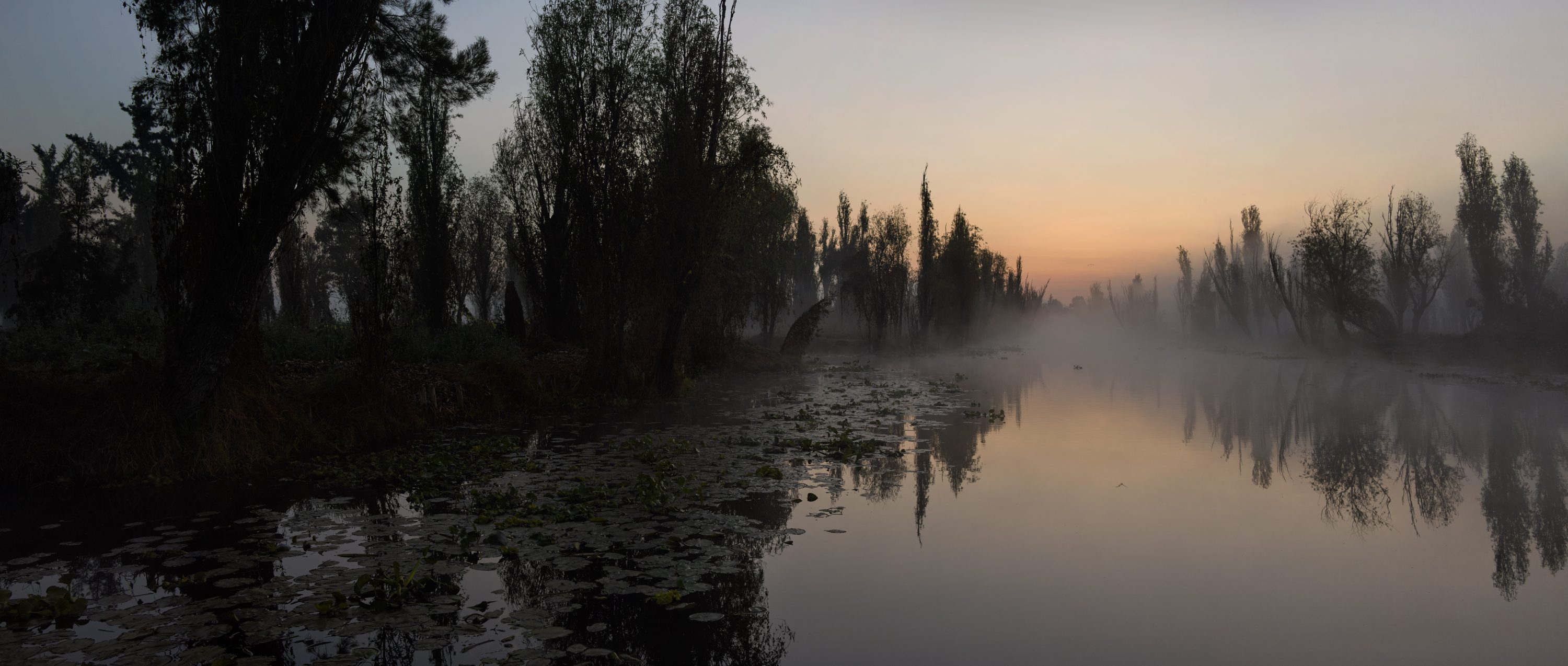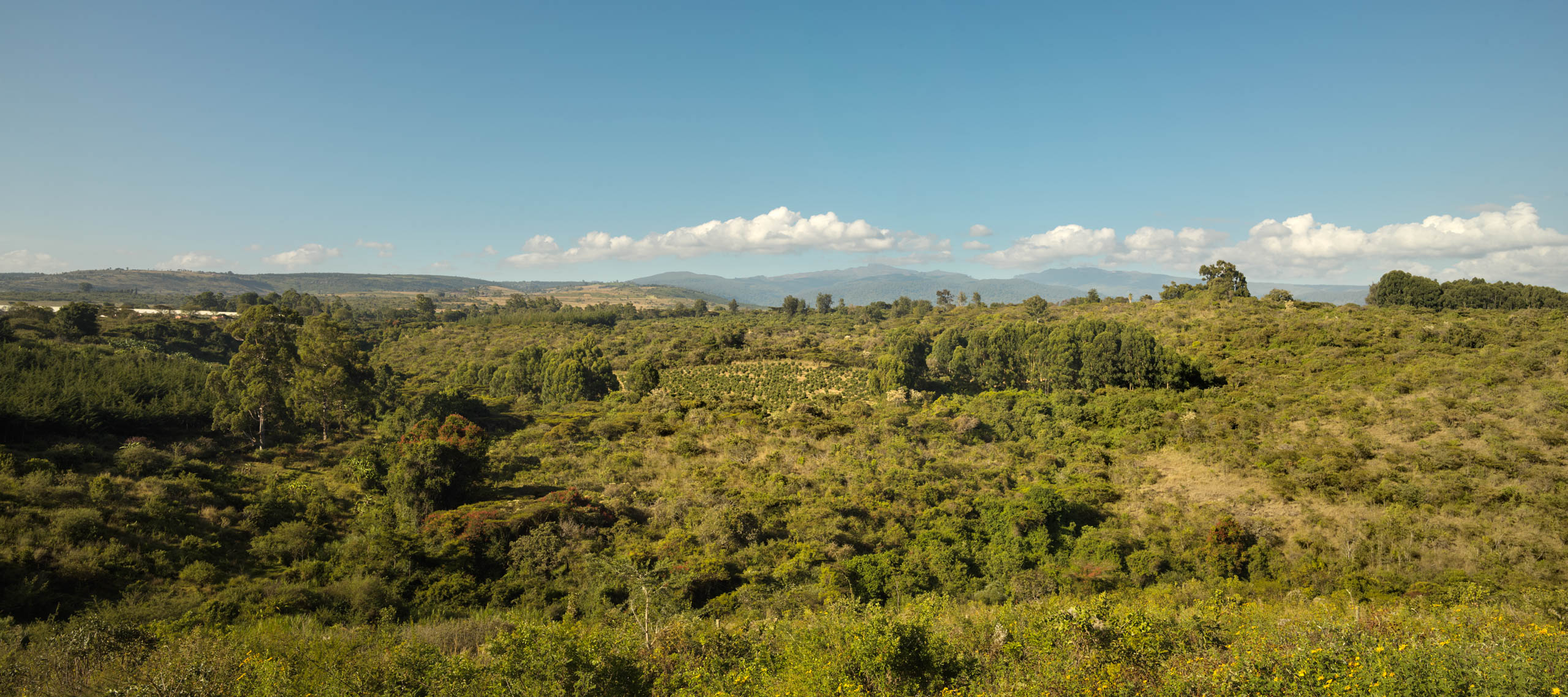
A story of proud heritage and hope
A family story about a Swedish horticultural family that farmed for three generations at the foot of Mount Elgon in western Kenya, on the border with Uganda.
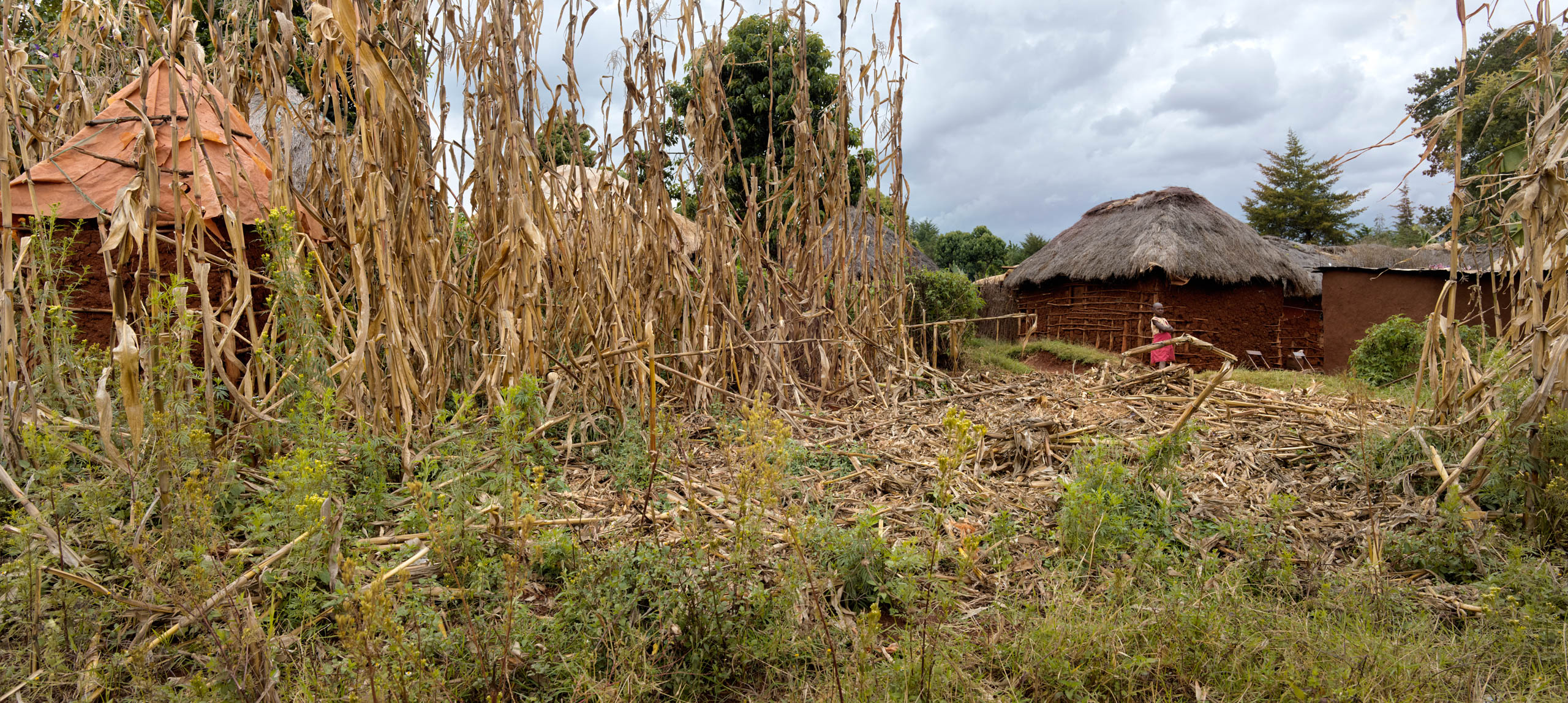
A short history
The area around Mount Elgon in the west of Kenya, on the border with Uganda, lends itself perfectly to a film that’s set in 1922. The decor seems to have changed little: the mud huts in which the local population lives, the absence of asphalted roads and all other signs of progress: it’s all a perfect background to a story that begins in the year when Swedish botanist R.A. Andersen came to settle here.
The Andersens want to leave Sweden, where the growing season is short, and settle in Africa. They cross the entire continent looking for land and in 1922 they find the ideal place in which to make their dreams a reality. They buy farmland on the slopes of Mount Elgon, where the soil is fertile and the climate ideal, and start to produce pears, apples, plums, oranges, lemons and rosebushes.
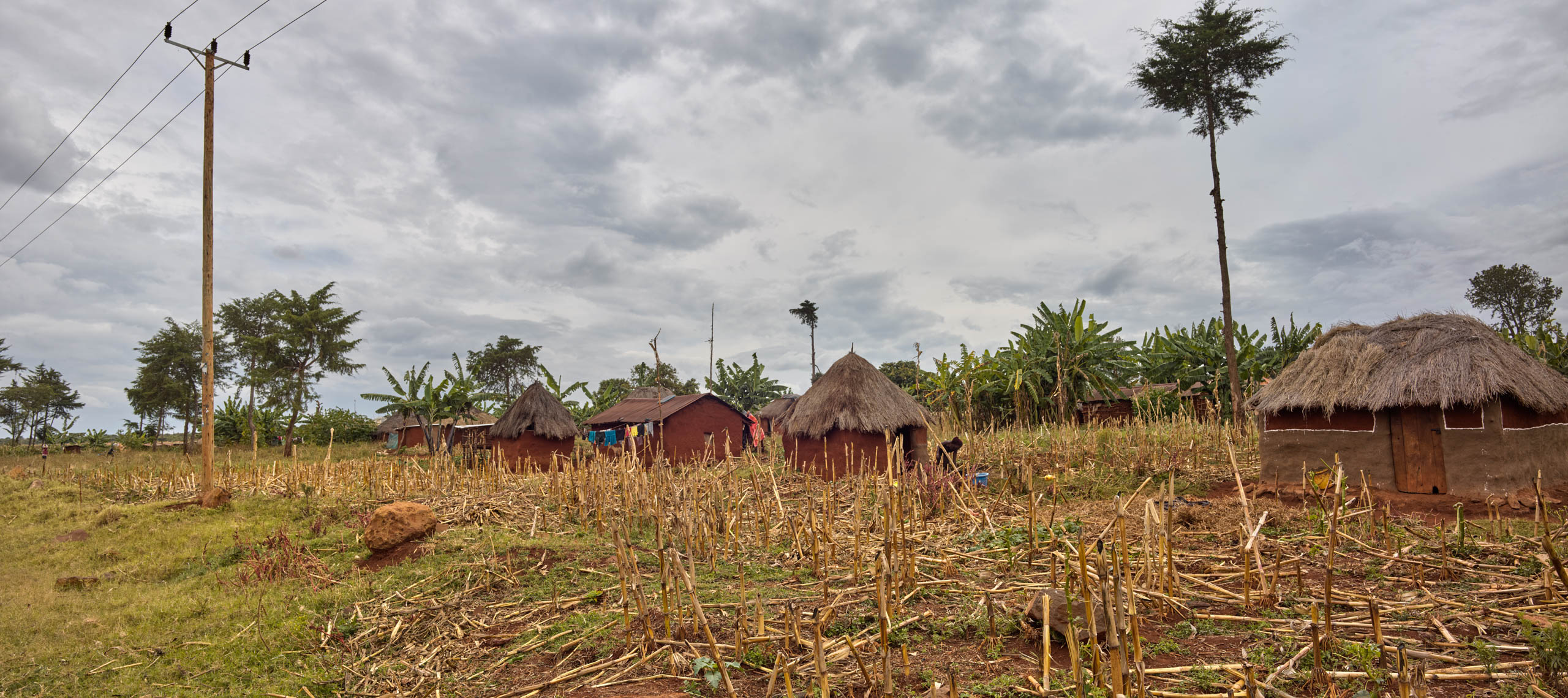
In 1935 the Andersens establish their first commercial apple orchard. The rose nursery begins with the sale of rosebushes for gardens all over Africa. In 1950 the first planting of the Fuerte avocado takes place and in 1960 the ownership of the farm is consolidated, and the first commercial orange trees are planted. Bob’s father runs the farm along with Bob’s grandfather. Bob spends his childhood there and develops a love of the land, the community and nature.
After finishing his studies, Bob left for Europe and got a job with IBM in London. In 1990 he received a phone call from his father, who said he was intending to sell the farm. That came as a shock to Bob. The farm was his home, the only home he knew. The community were his people, the people he’d grown up among. Deciding to take over his father’s farm, he returned to Mount Elgon.
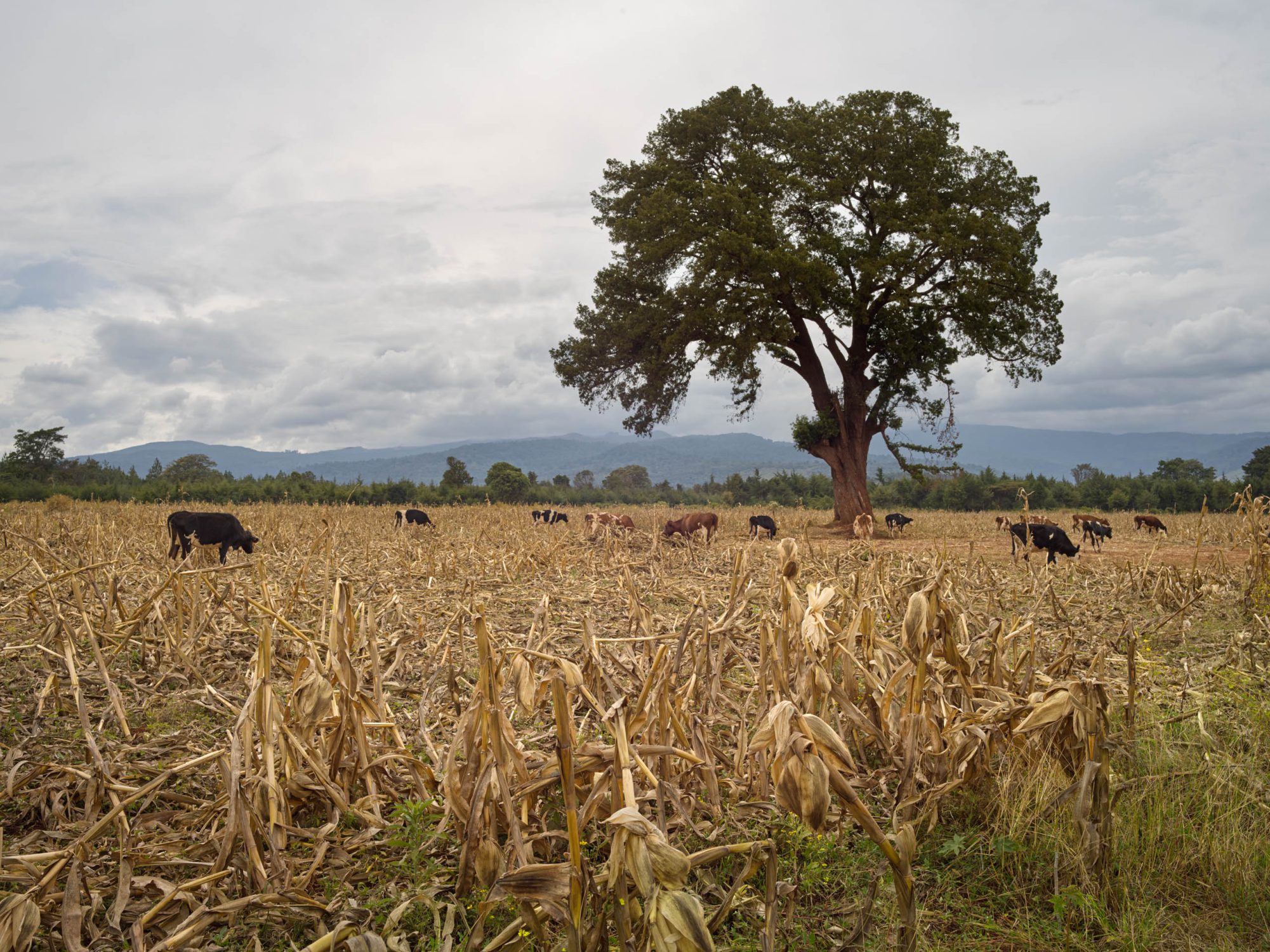
Episode 2
December 2022. It’s 100 years since Swedish botanist R.A. Andersen settled here. Bob Andersen, the third generation, has now been running the farm for thirty years and we’ve been invited to visit. We’re sceptical. A huge farm employing more than 1,500 people, growing 85 million roses on 43 hectares of land and producing 10 million avocados on 120 hectares – how sustainable is that?
Neither avocados nor roses have the best of reputations when it comes to sustainability. We know about the use of artificial fertilizers and pesticides, we read about exploitation and the huge amounts of water needed to produce a kilo of avocados. And transporting roses across the world by plane is hardly sustainable either.
But Bob Andersen’s reputation precedes him. Mount Elgon Orchards is known as an enterprise where sustainability is the starting point of everything they do.
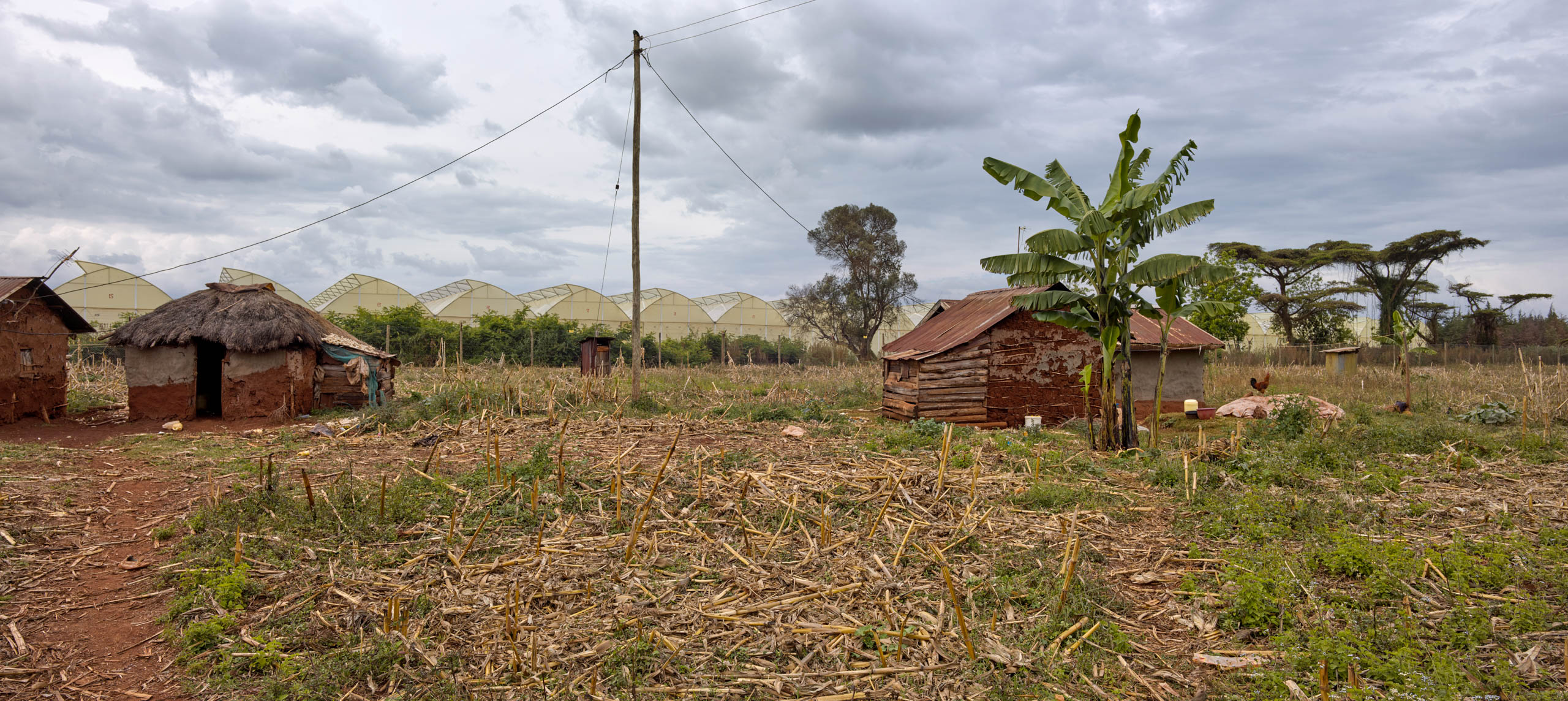
Meeting Bob
We’re on our way to Mount Elgon Orchards for a meeting with Bob Andersen. Gradually the 100-year history of the Andersens becomes visible. Endless lines of white plastic greenhouses for the roses stick up above the mud huts and we pass the first Andersen school, the Andersen hospital, the Andersen community centre and some of the houses for the staff.
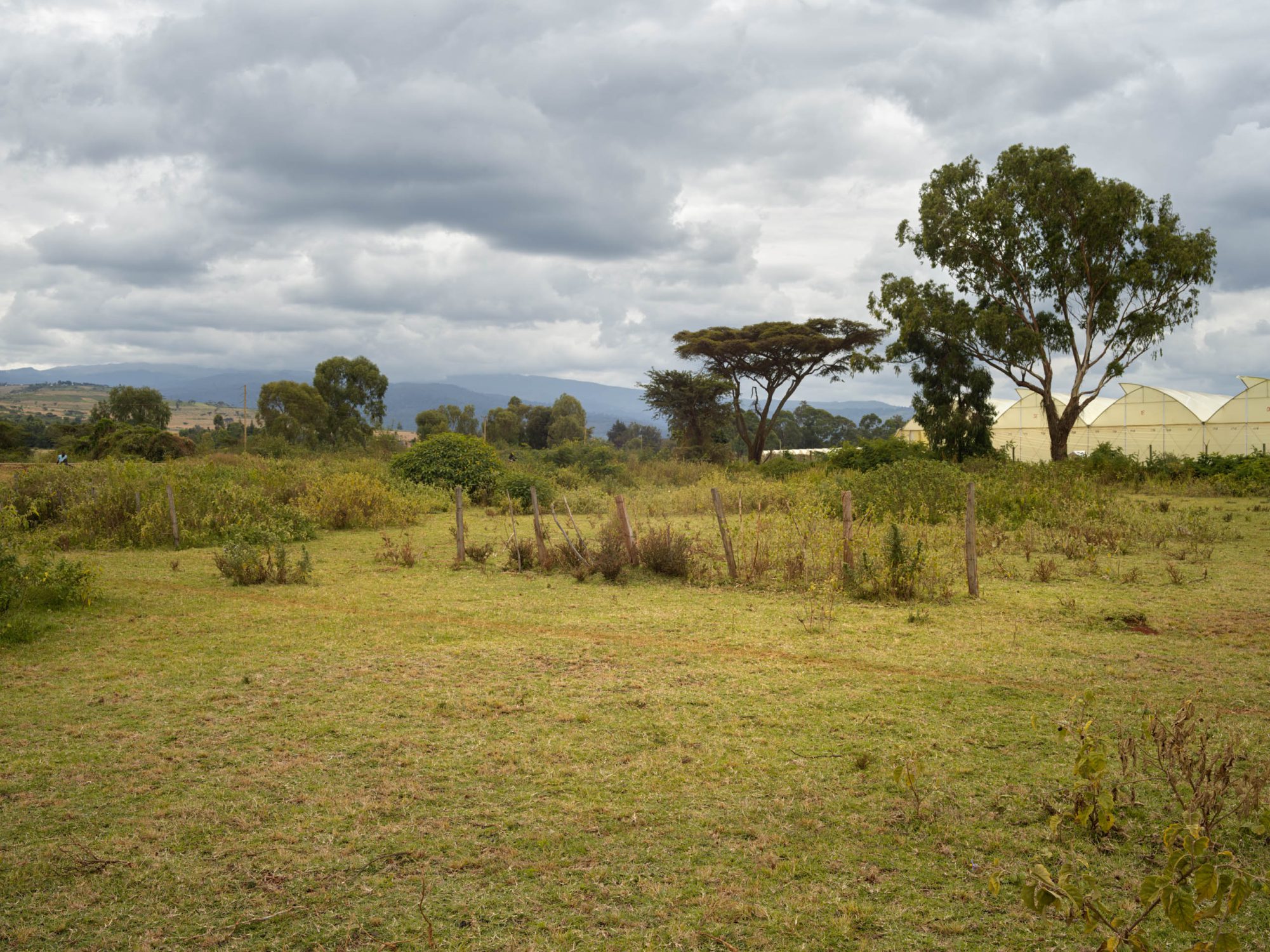
Mount Elgon green and fertile
The Andersens turn out to have made a good choice 100 years ago. The area around Mount Elgon is fertile and green, but there’s still no proper connecting road for the transport of avocados and roses. Over the past 35 years Bob has lost many trucks as a result, but now a start has been made on the laying of a road. This was not the only obstacle Bob encountered on the way, and we hear about all of them when Bob begins to talk.
.
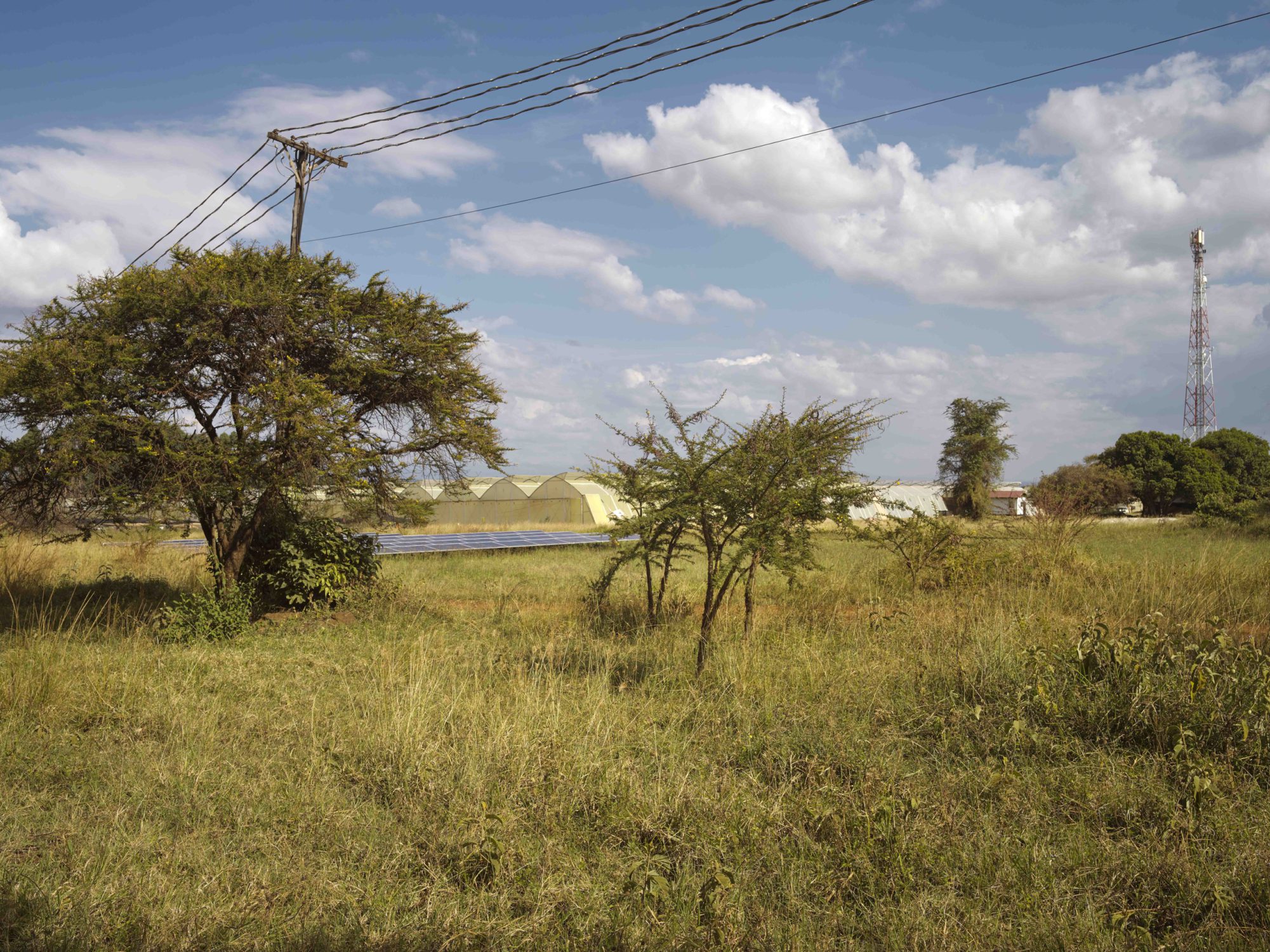
We talk with Bob and stay for two days on the enormous farm, impressed by how a Swedish farmer serves the African community and grows the world’s most sustainable avocados.
And the roses?
"We plan to be carbon neutral by 2027, from the farm to our distribution, including air and sea freight."
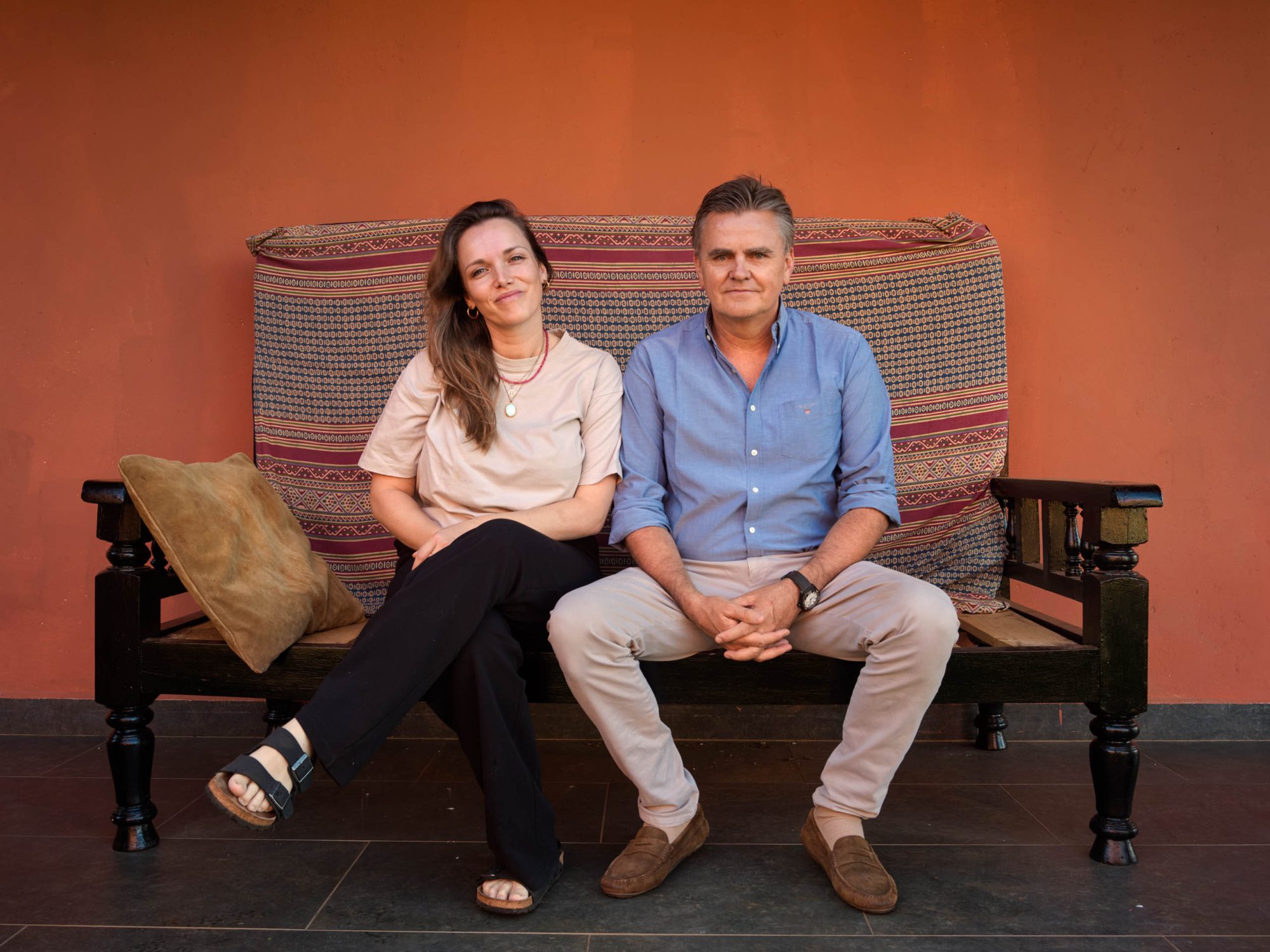
Meeting Bob and Hanneke
We meet Bob and Hanneke on the veranda of their house, with a view of the extensive farm and of Mount Elgon in the background. Hanneke, Bob’s second wife, has just given birth to their son.
Hanneke is Dutch. She studied sustainable agriculture and food security, specializing in industrial stockbreeding. In Indonesia she researched the impact of the palm oil industry on the rainforest and in 2022 published her book ‘Diet for a Better Planet’.
Now she is at Bob’s side, researching to grow the most sustainable avocados in the world. Bob is a driven and passionate man, a born entrepreneur with his heart in the right place and boundless energy. His motto in life is: if you’ve got it, share it.
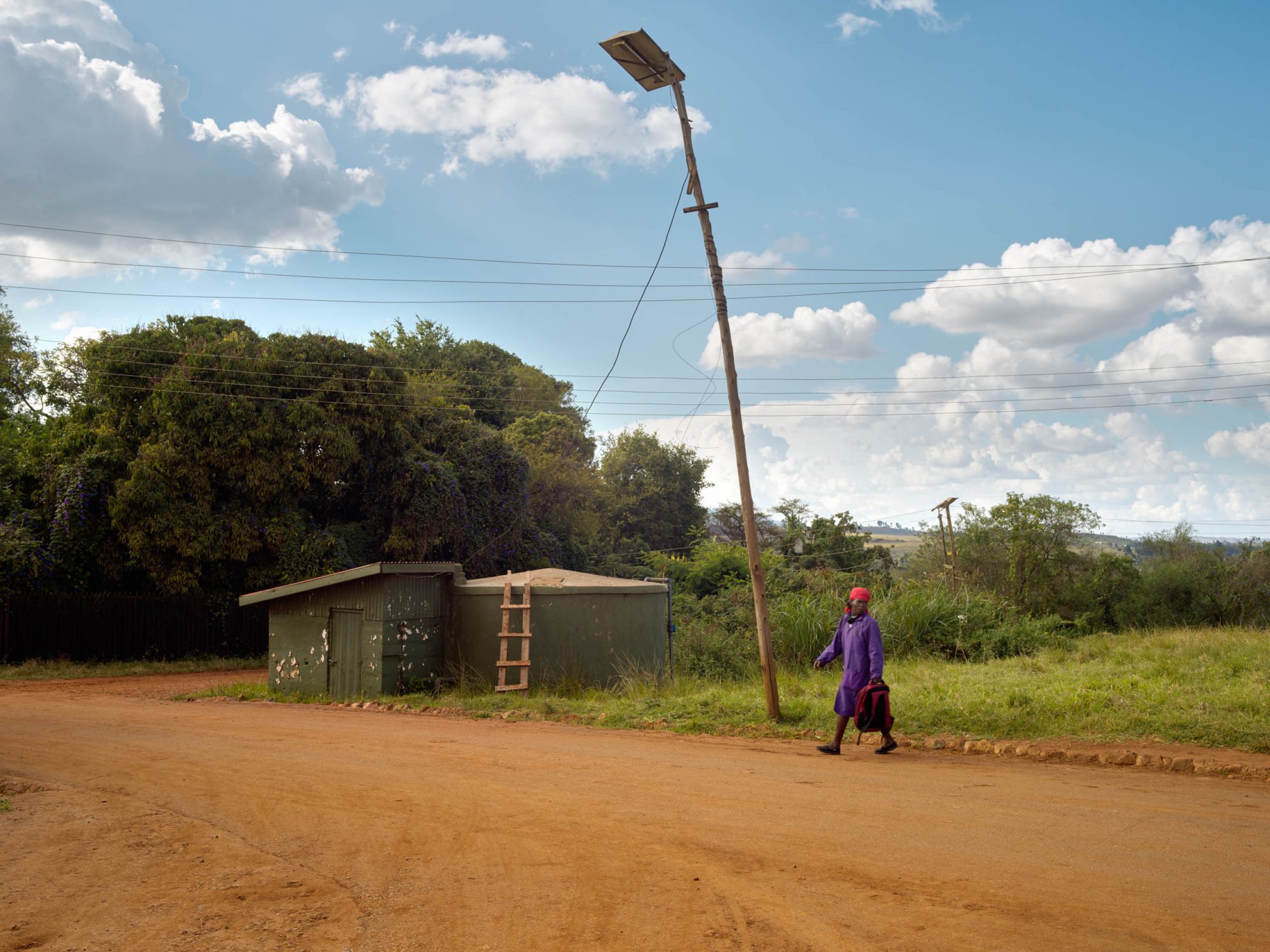
“Build a community instead of just enriching yourself.”
‘When we started, we came up with three core values for the farm: quality, responsibility for people and the environment, and fun. It starts with the fun. I believe that if you have fun at work, that’s the best guarantee of quality. So we started engaging with the community, finding out what the needs were, and very quickly it became apparent what people needed most of all. The first thing was health and the second was education. They would almost rather put their kids into school than put extra food on the table.
‘That was quite a eureka moment for me. In 1998 my first wife Bea and I started by setting up a medical centre. It began with one bedroom and one nurse, and now it’s a fully fledged hospital with a 17-bed inpatient ward. It’s become a hospital for the whole community.
It was the first of many services, like schools, training and other facilities, supporting the community and making sure everyone benefits. It was all initiated and developed as part of the Mount Elgon Trust.’
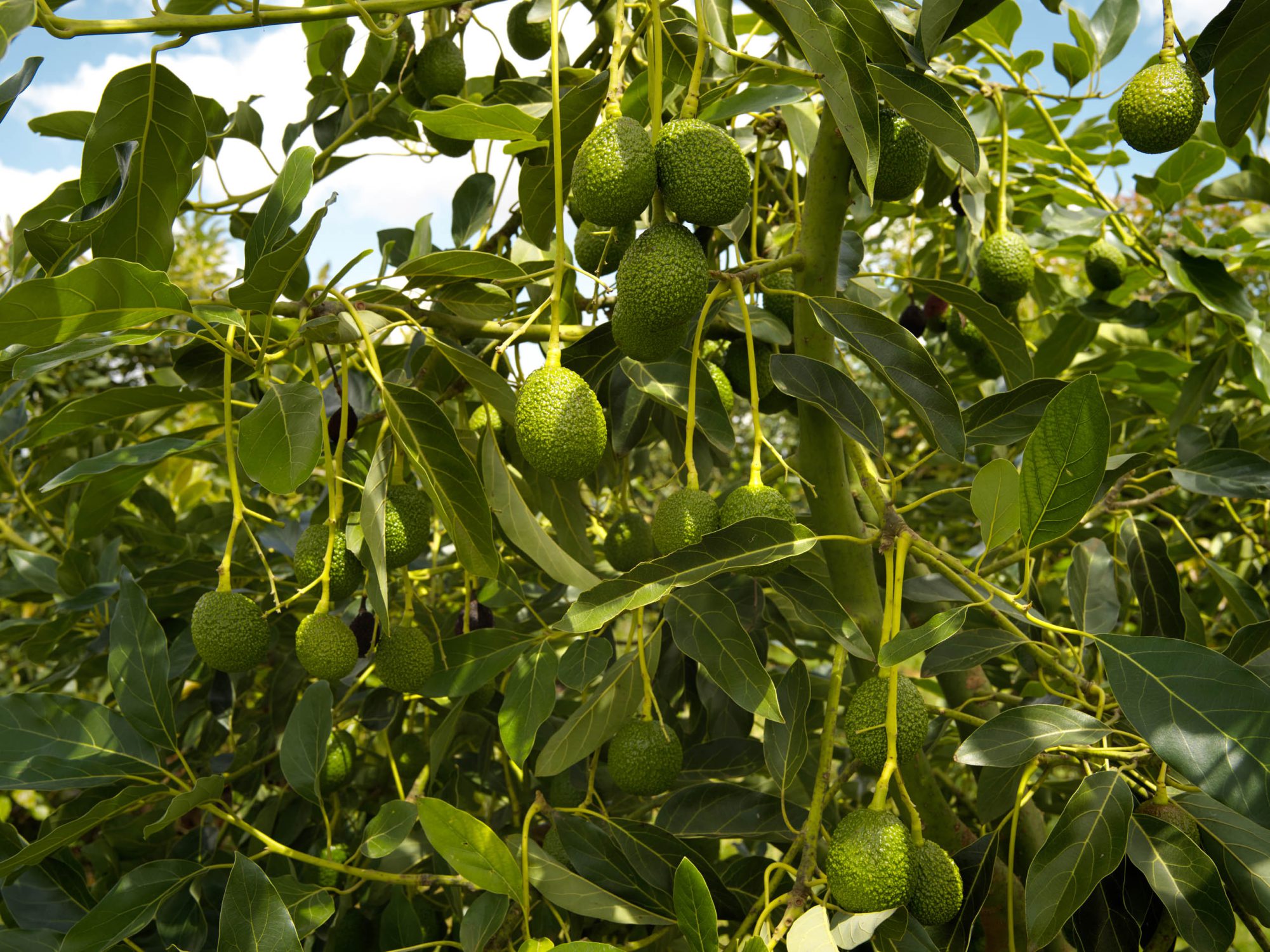
We want to be the world's first water-neutral avocado farm.
That means being purely rainfed. We now have 300,000 m3 of lined water reservoirs and by 2027 we’re planning to have a million m3. That’s a billion litres of water in lined reservoirs, so that we never have to touch rivers or aquifers.
Everything we use, wear, buy, sell and eat takes water to make.
The water footprint measures the amount of water used to produce each of the goods and services we use. It can be measured for a single process, such as growing rice, for a product, such as a pair of jeans, for the fuel we put in our car, or for an entire multi-national company.
The water footprint has three components: green, blue and grey. Together, these components provide a comprehensive picture of water use by delineating the source of water consumed, either as rainfall/soil moisture or surface/groundwater, and the volume of freshwater required for the assimilation of pollutants.
In Kenya, in the area where Mount Elgon is located, a lot of rain falls that is collected in basins. This rainwater (blue water) that is used for avocado cultivation is, therefore, sustainable, no claim is made on soil (grey) and river water (green)
Growing avocados in an area with little rainfall requires a lot of grey and green water and is therefore not sustainable.
Source: Waterfootprint.org
We use water from our dams. When I go to food fairs in Europe or watch TV, I notice there’s a lot of misinformation about avocados. They’re said to be the most unsustainable fruit.
There was a recent study by a Dutch scientist who came to Kenya and discovered that most Kenyan avocados are rainfed. Here we use about 7 litres per kilo. Obviously there are countries that are very much worse – some even grow avocados in the desert, so they have to get the water from a river, an aquifer or some other non-sustainable source.
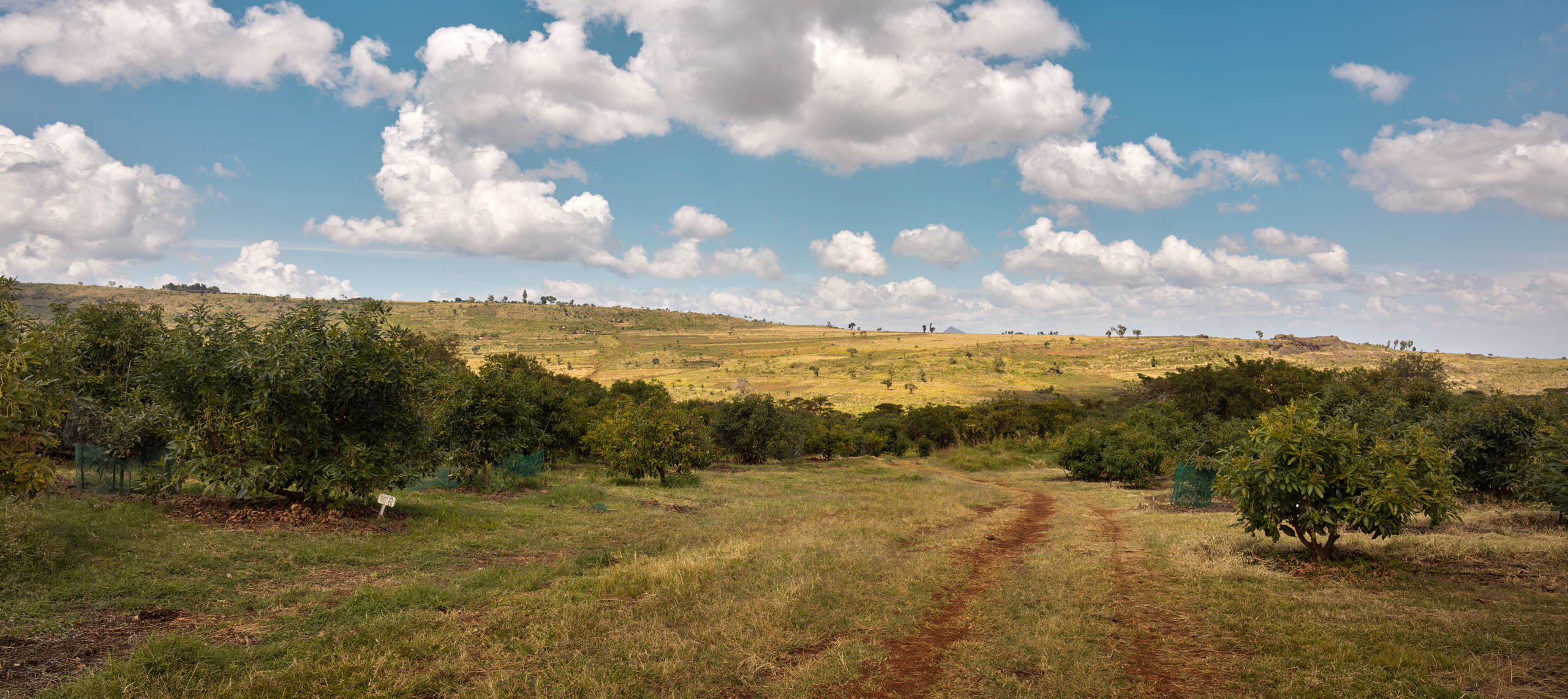
It’s not an orchard, it’s a forest.
So, out of our core values comes responsibility. We really live by our core values; it’s not just empty rhetoric. Responsibility for the environment is just as important to us as responsibility for the community. For example, we decided to try to be truly all-encompassing with avocados in terms of the environment, so we’ve rewilded about 400 acres of the farm by planting indigenous forests. We’ve allowed colobus monkeys, vervet monkeys, civet cats, genet cats, serval cats and all manner of antelope to live on the farm.
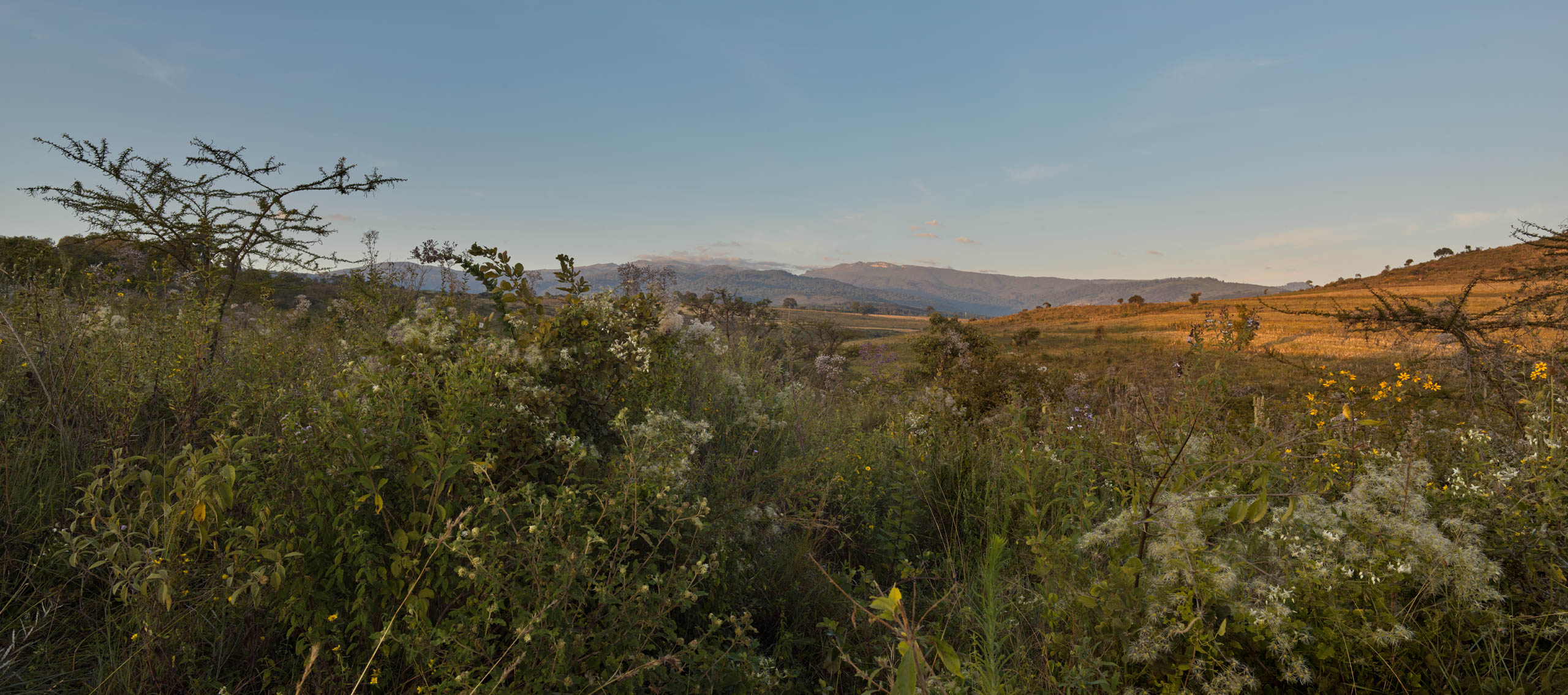
"If you look at our avocado fields, you’ll see they are planted in between woodland, not in place of a forest."
Rewilding the farm
We have some wonderful stories about forest cobras, for example. We’ve had terrible problems with rats. When we stopped our workers from killing the much-feared aggressive forest cobras, we ended up with too many of them. They ate the rats, but we started to get slightly nervous because perhaps they’d become a danger to the workforce. But then came the mongoose, which controlled the forest cobras. Then came the jackals, which controlled the mongoose population. And when we stopped hurting the cobras, they stopped being aggressive. We have a really lovely balance of nature on the farm now.

"We don’t have fences, so the antelope are a bit of a problem when we plant a new avocado field. They love a fresh juicy avocado leaf. So now we actually have to fence every avocado tree individually, until it’s large enough to survive."
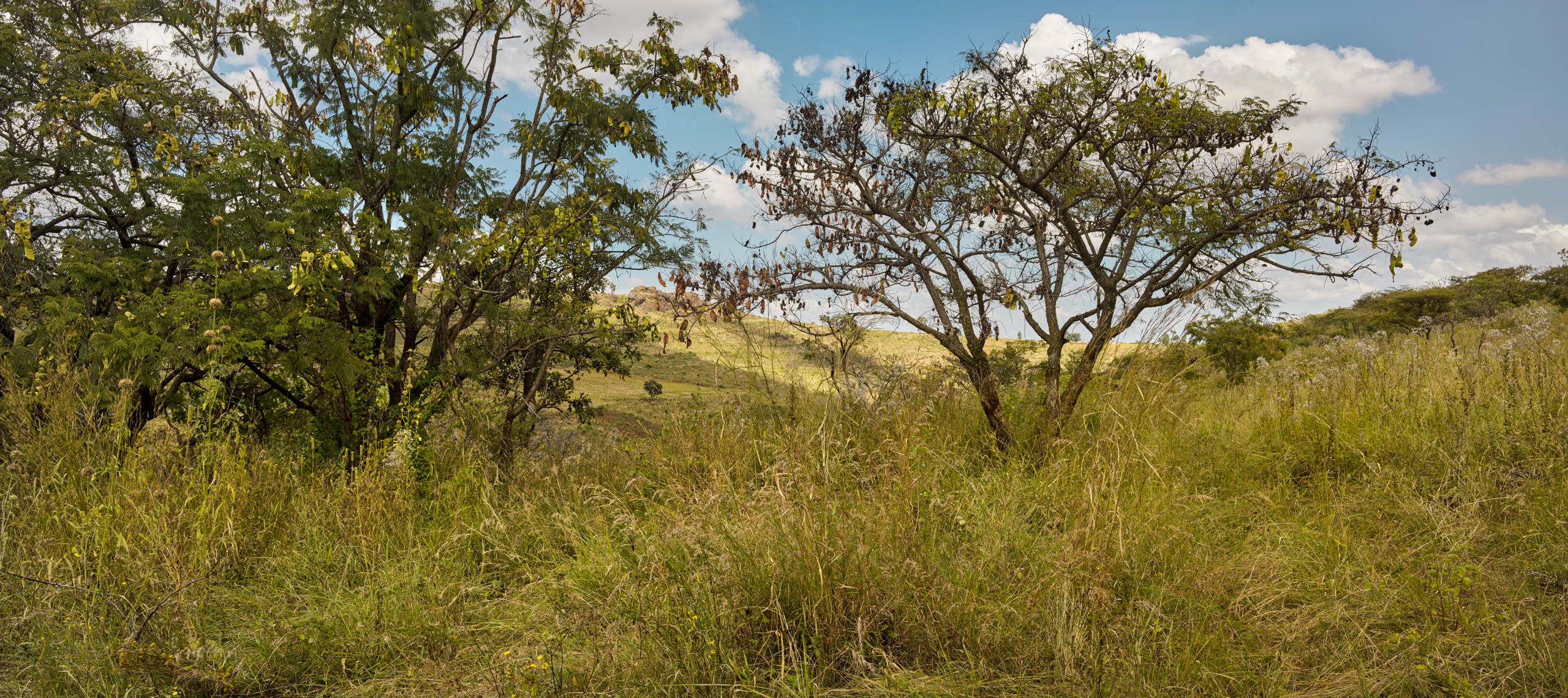
Everything we use, wear, buy, sell and eat takes water to make.
The water footprint measures the amount of water used to produce each of the goods and services we use. It can be measured for a single process, such as growing rice, for a product, such as a pair of jeans, for the fuel we put in our car, or for an entire multi-national company.
The water footprint has three components: green, blue and grey. Together, these components provide a comprehensive picture of water use by delineating the source of water consumed, either as rainfall/soil moisture or surface/groundwater, and the volume of freshwater required for the assimilation of pollutants.
In Kenya, in the area where Mount Elgon is located, a lot of rain falls that is collected in basins. This rainwater (blue water) that is used for avocado cultivation is, therefore, sustainable, no claim is made on soil (grey) and river water (green)
Growing avocados in an area with little rainfall requires a lot of grey and green water and is therefore not sustainable.
Source: Waterfootprint.org
7 or 350 litres of water
There’s such bad press about avocados around the world with regard to water consumption. A recent study by a Dutch scientist showed that Kenya is actually a high rainfall avocado producing country with an average of seven litres per kilo. We’re aiming to get that down to zero.

We’re collecting all the rainwater from the roofs of the greenhouses, so we’re going to be 100% rainfed by collecting rainwater and using it on avocados and roses. We’re working intensely on becoming carbon neutral. We’ve built a 260-kilowatt hydroelectricity plant. So far we’ve put in 160 kilowatts of solar energy and we’re planning to take that up to 500 kilowatts. We’re also working on building a new hydroelectricity plant that we hope to start in 2024. It will give us 2.5 megawatts of power, which is more than we need. So about 2 megawatts will go back into the national grid.
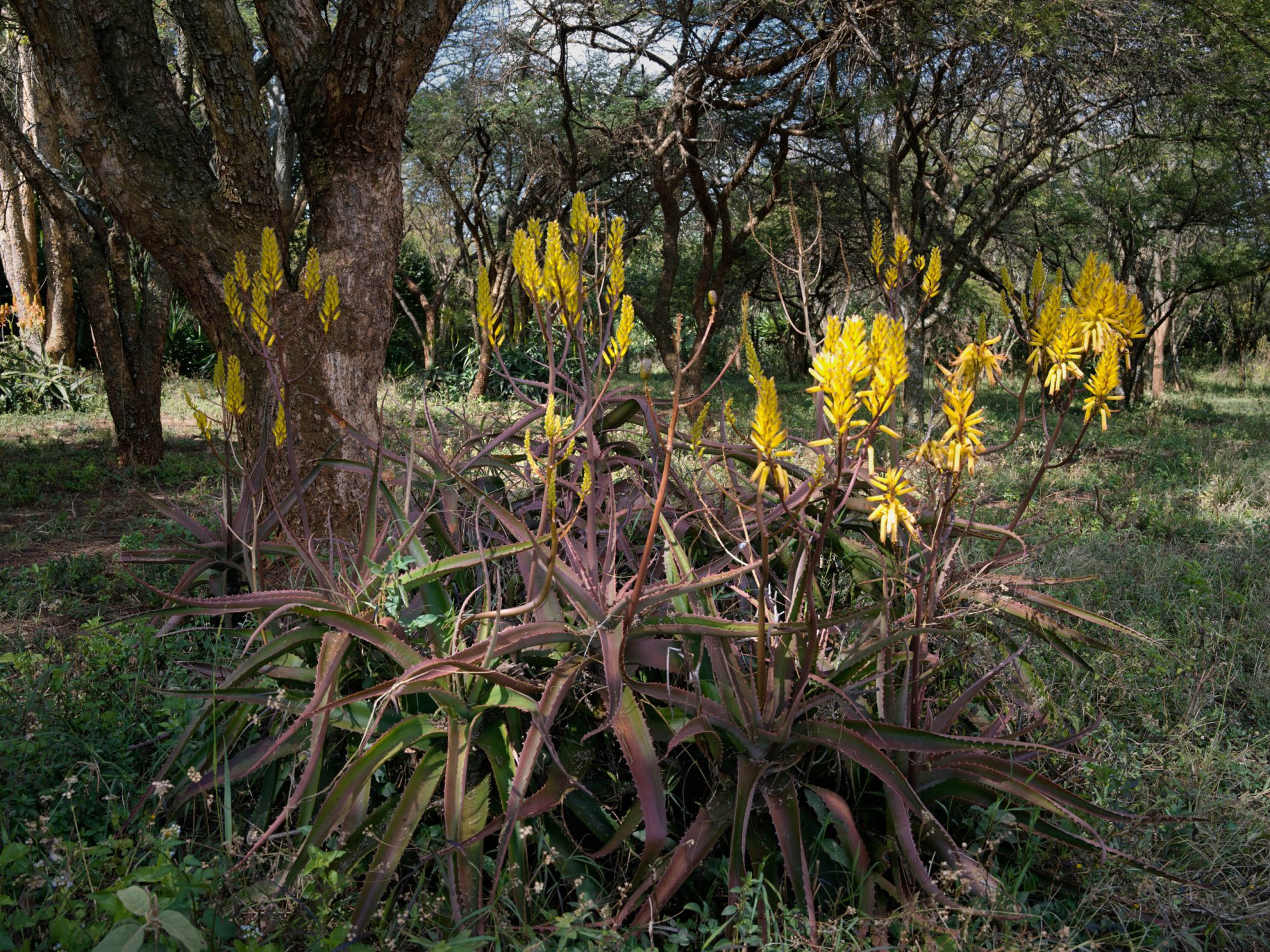
About pollinators
We’ve rewilded about 150 hectares of the farm. It started with just wanting more trees, to make a home for birdlife and for all the flora and fauna. But very quickly we started seeing benefits for the avocados.
Most farms in Kenya have bees for pollination. It became really interesting as the forest started to grow back. We now see that we hardly need any bees, because we have pollinators like the hoverfly which are reproducing in the faeces of antelope, and about 98% of our pollination is being done by natural pollinators like butterflies, moths, hoverflies, stingless bees, wasps and so on.
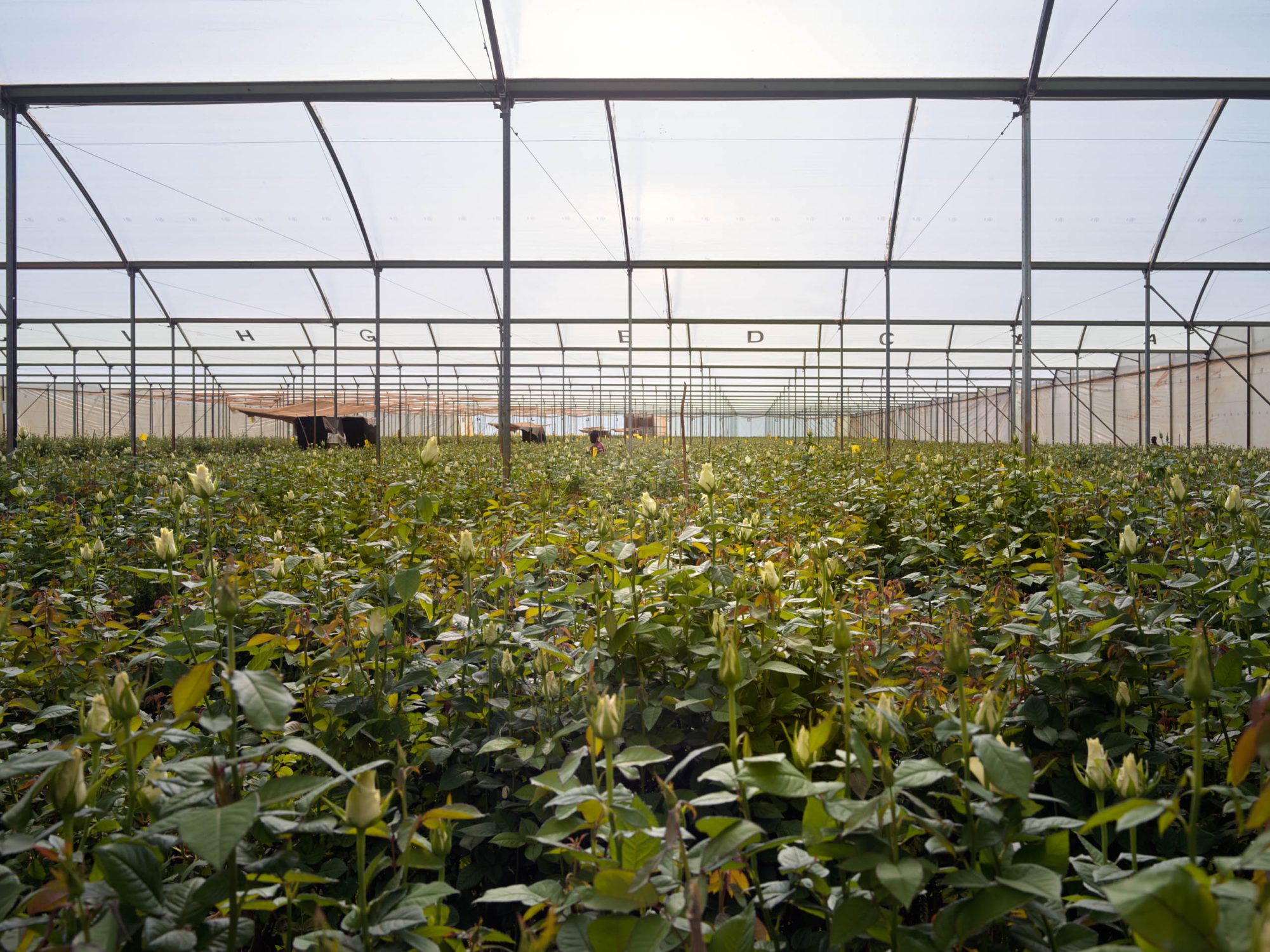
What about the roses?
We’re putting 21 different types of bacteria in our soil. We’re also using a lot of Trichoderma, which is a natural fungus that protects roots. There are all manner of fungi and bacteria, and we’re using worms for recycling rose waste. We use the worm compost, although it’s actually the worm pee that’s most effective. We spray it onto the roses and the avocados, and it’s incredible stuff.
We don’t spray any chemicals at all on our avocados, and we have reduced pesticides on roses by 90%. For insect control we use pheromone traps that catch certain moths.
We produce 26,000 tons equivalent of CO2 with our livestock, with our avocados, with our roses, and that includes the freight all the way to market. 80% of those 26,000 tons is the air freight for the roses from Nairobi to Europe. We’re planning to diminish that and at the moment we’re working hard on switching to sea freight.
It’s still a challenge, but if we put the roses to sleep at 0.5 degrees centigrade, we’re able to ship them. We’re working on a more efficient way to get them to market. It now takes four weeks, but if we can get that down to three weeks, the quality will be perfect. Once we succeed in that, we’ll have reduced our CO2 by 80%.
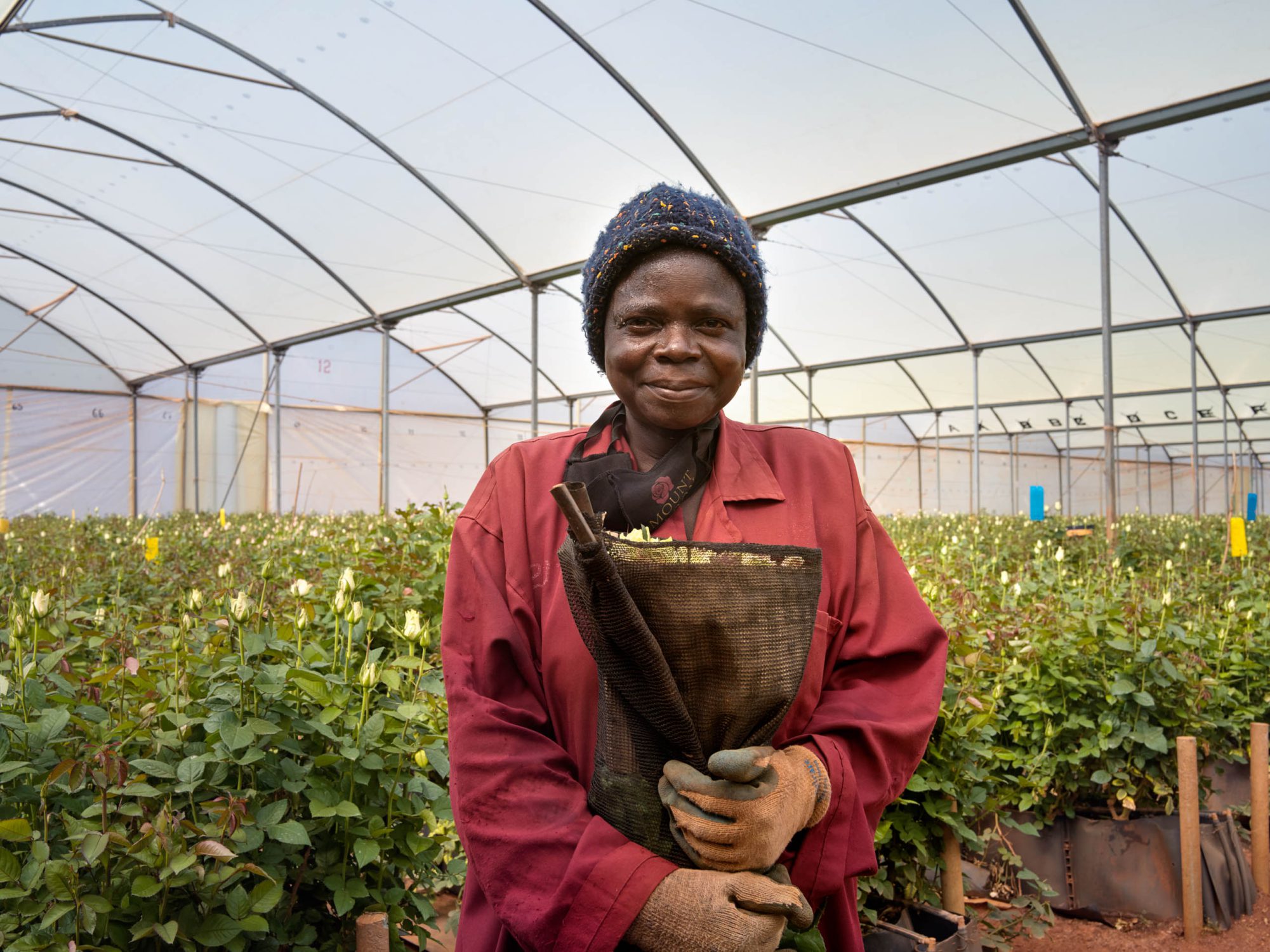
We’ve got our own tree-planting project as part of our capacity building programme. Our five new tree nurseries produce 500,000 seedlings a year. Aside from the Acorn project, which will mean planting on smallholder farms, our mission is to partner with the local community on rewilding projects, planting an additional one million tree seedlings.
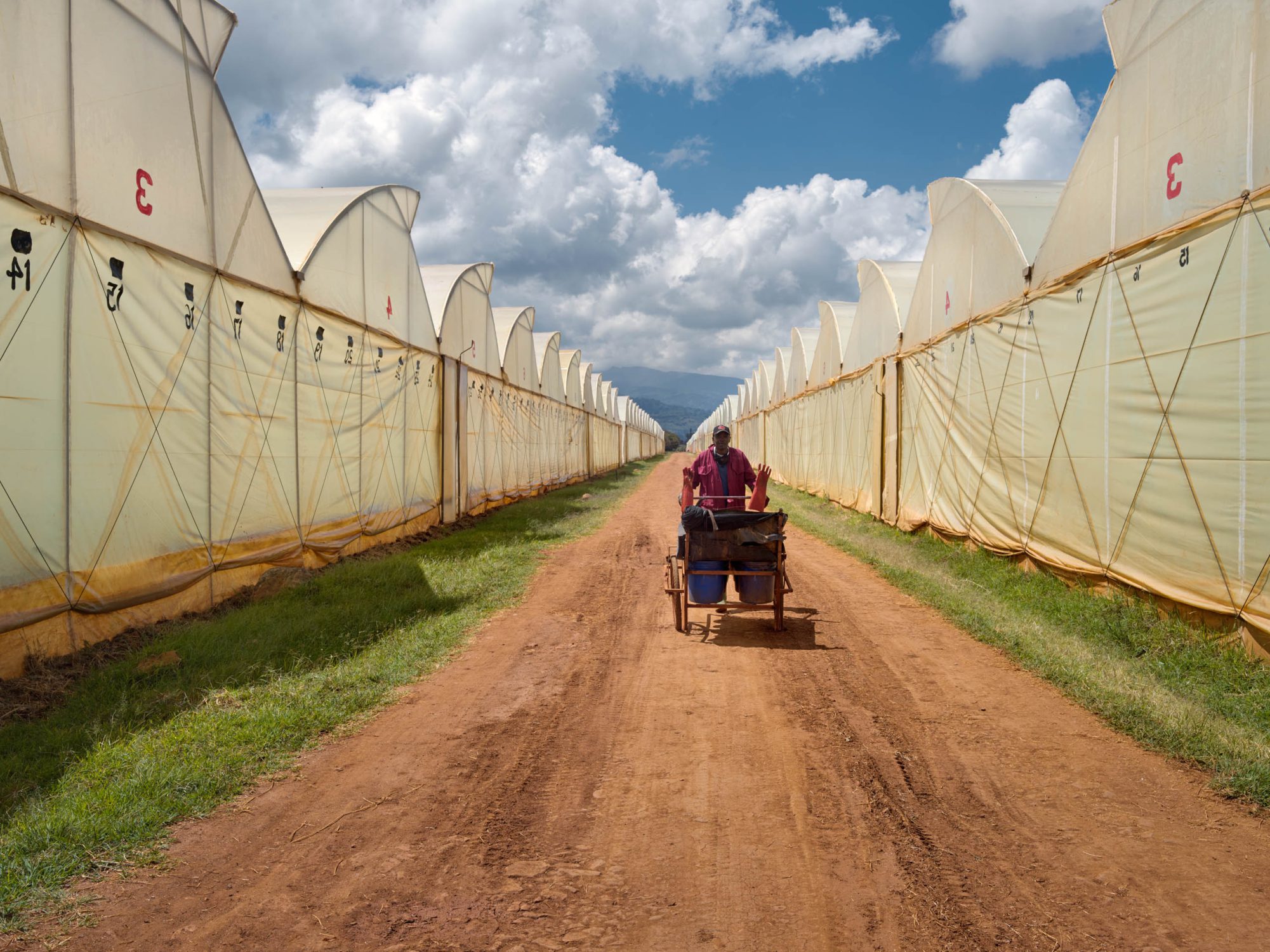
Having fun on the farm
A day on the extensive Mount Elgon rose farm is a day of feasting your eyes and being part of a very big family. People are at work everywhere: in the greenhouses, in the packing hall, cutting roses and packing and transporting them. Others look after the cows and the sheep, or work in the farm’s own sawmill. The atmosphere is joyful. This is a community at work.
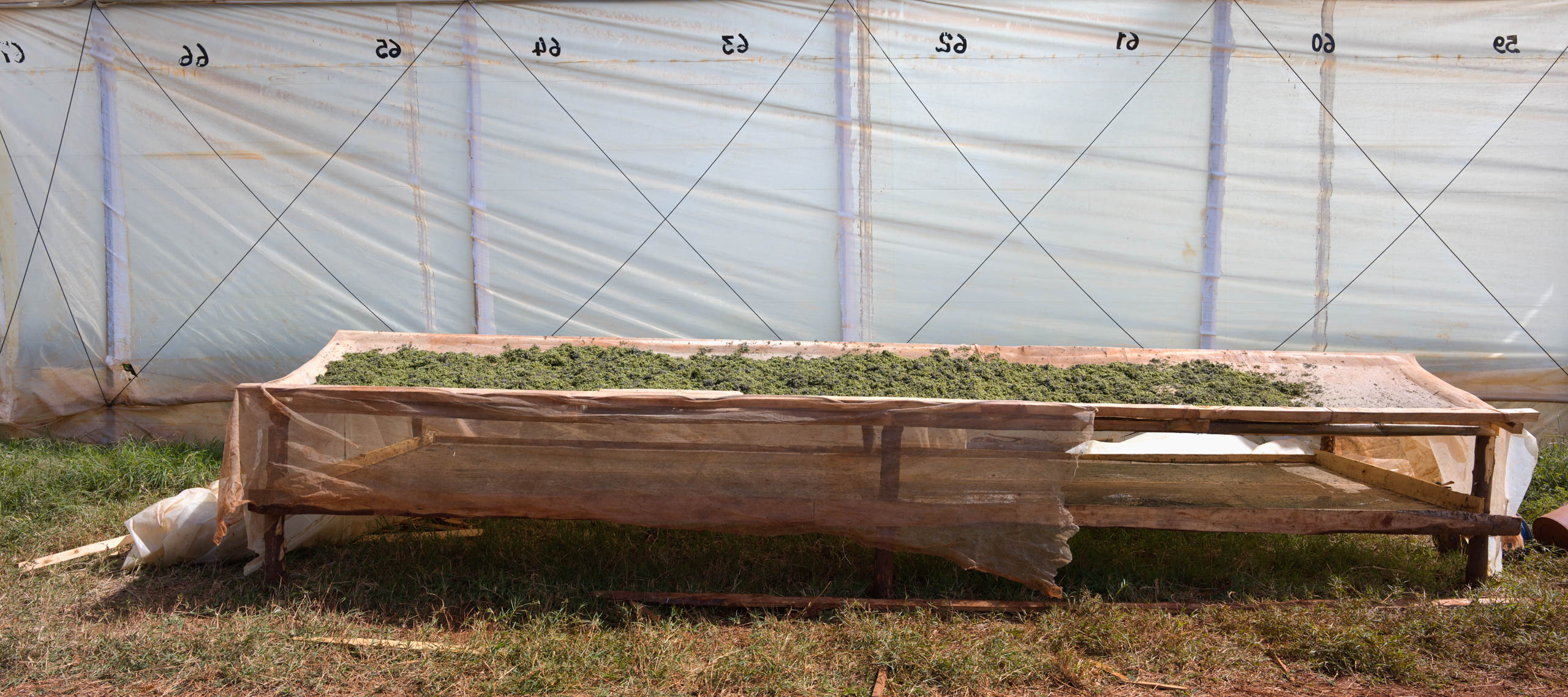
Duckweed
The waste water from the roses is full of nutrients, so it’s caught and used to grow duckweed. It’s collected in large pools made of plastic from discarded greenhouses. Duckweed is very rich in protein and it’s used to feed the chickens.

Superfood
Duckweed is not only considered an important animal feed, it’s being discussed as a future ‘superfood’ for human consumption. It contains about seven times as much protein as soy and is rich in omega-3 fatty acids. Another positive aspect is that as an aquatic plant it doesn’t occupy valuable farmland.
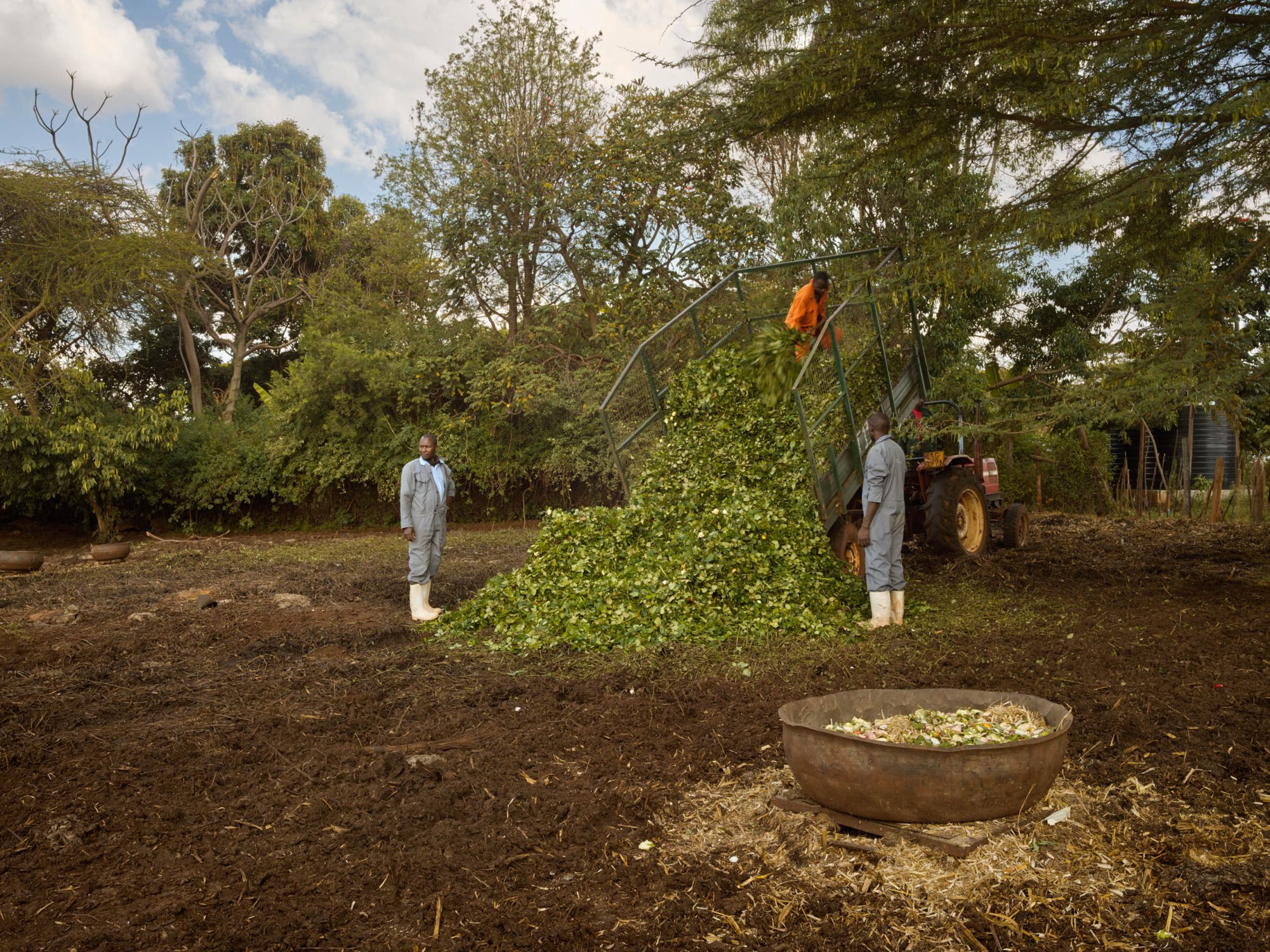
Avocados with a hint of rose
Because of the war in Ukraine, there’s a large surplus of roses. Russia is no longer an important buyer, and because of rising prices and inflation, many consumers are going without their weekly bunch of roses. Now the roses sometimes feeds the avocados.
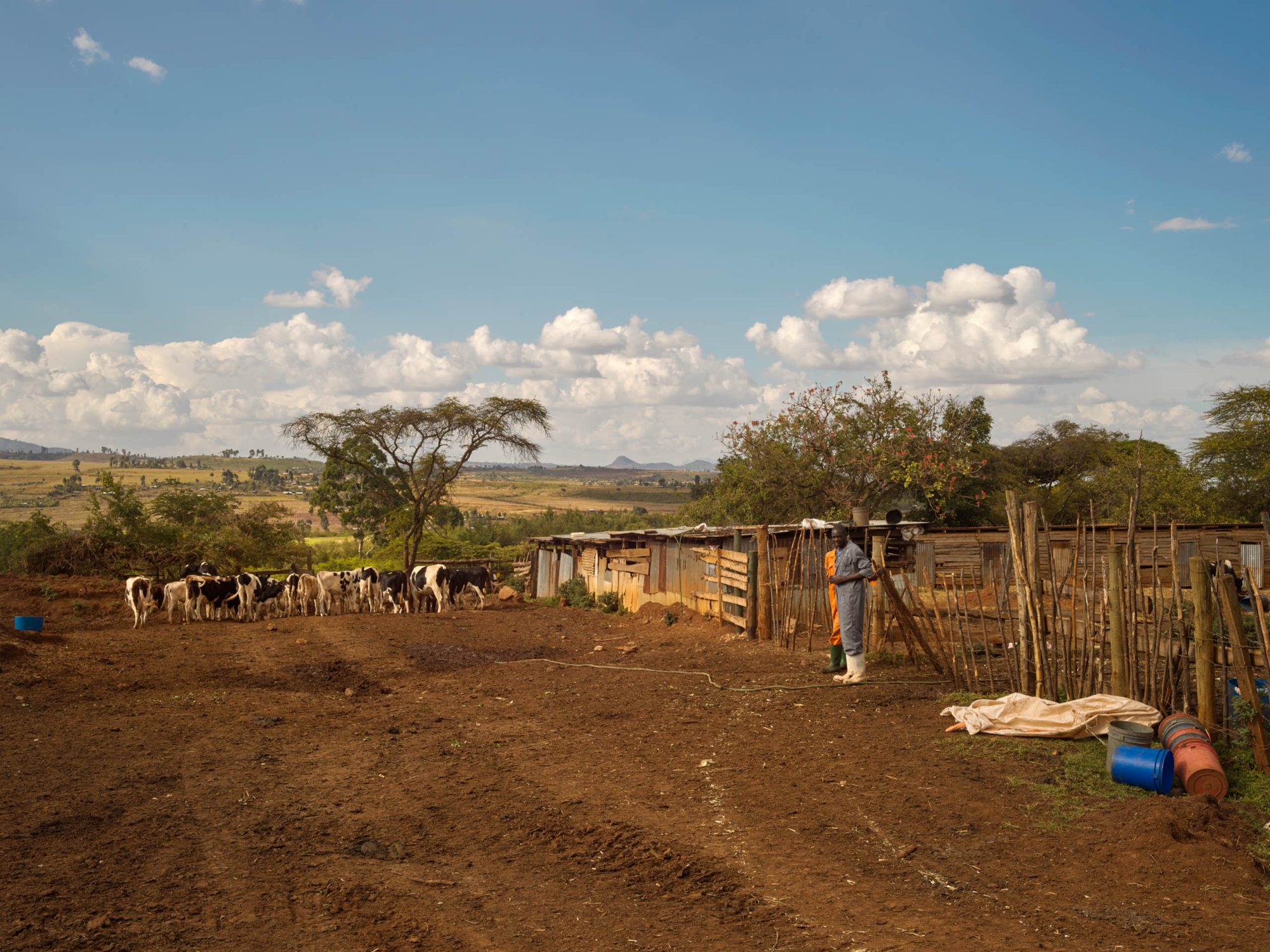
The cows of Mount Elgon Orchard are not kept for commercial purposes but for the community. They are its most important source of calcium.
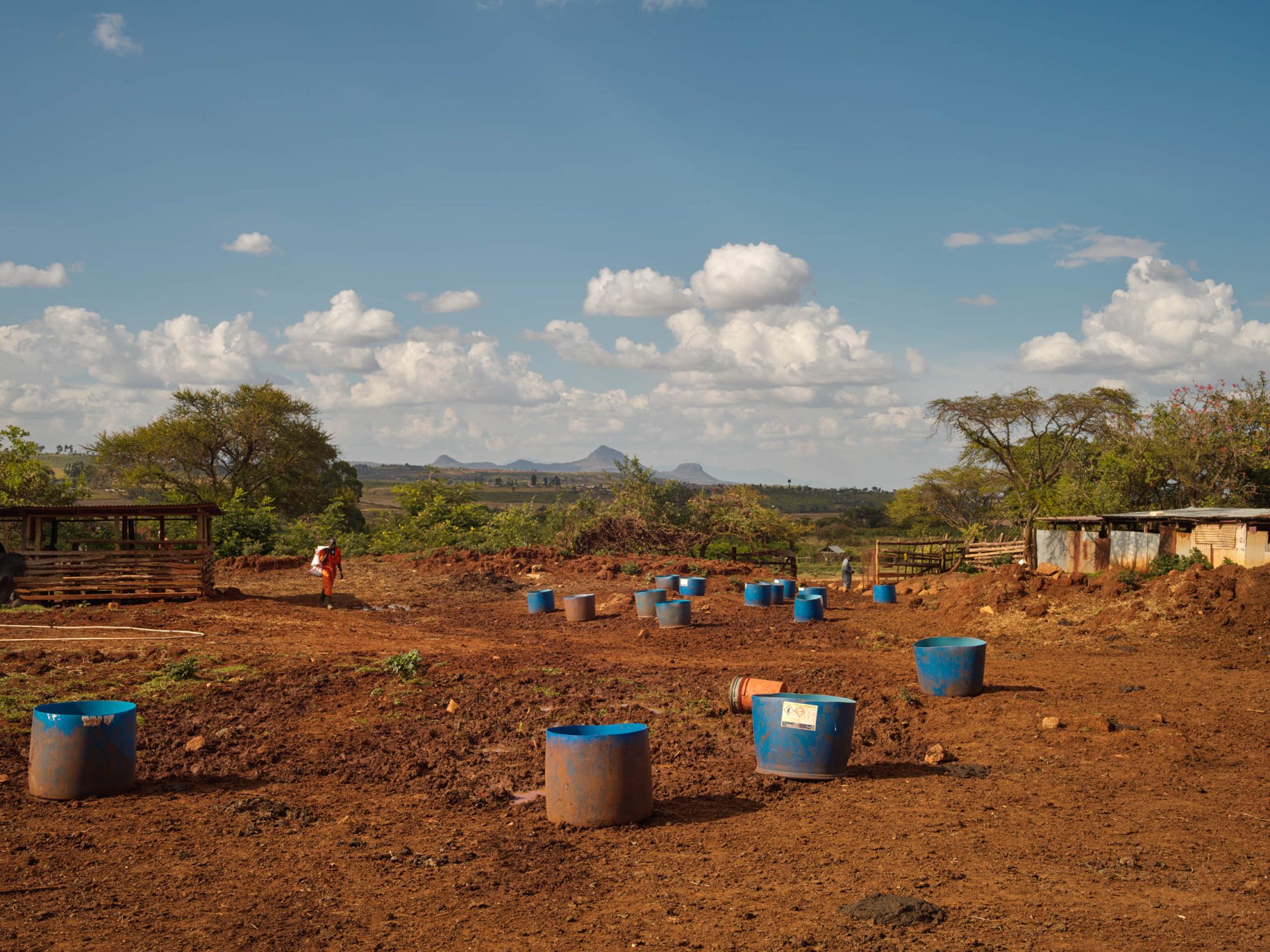
In addition to providing calcium, the cows produce manure to enrich the soil.
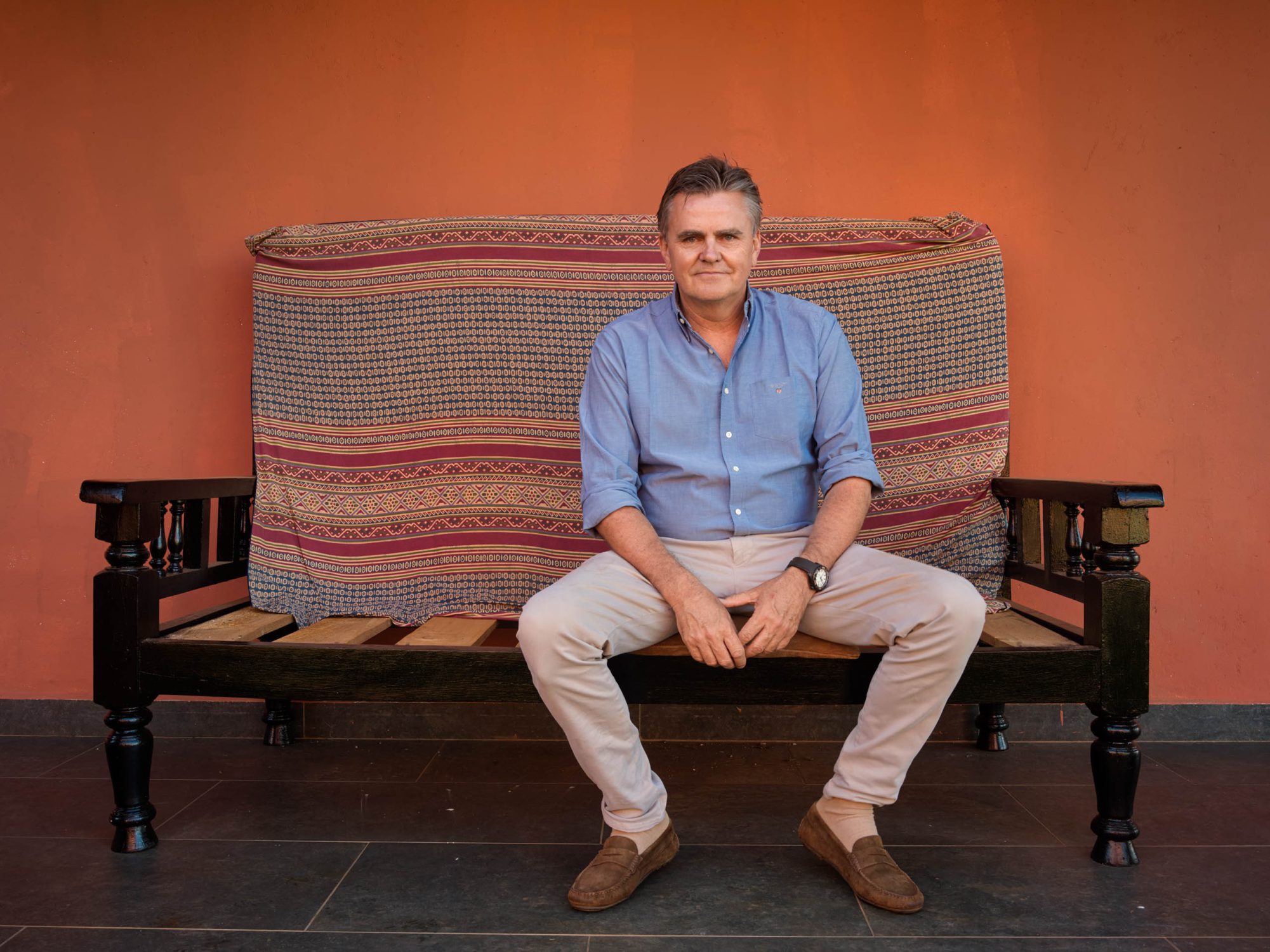
At the end of hours of talking with Bob about his mission, about what he does and how he does it, we have one more question for him, namely why he does it.
Why?
‘Because we need to be sustainable on this planet. Otherwise, there’s just not going to be a planet for our children and our grandchildren. We have to get it right.
"Five years ago I saw a documentary about Ernst Götsch and his syntropic farming, and that was like preaching to the choir for me."
Bob Andersen
I couldn’t believe it. That’s exactly the vision we had. It’s simply: let’s get farming in balance. It is not just cutting the forest down and creating more and more production areas. So if you look at our avocado fields, you’ll see they’re planted in between woodland, not in place of a forest. It is really just that. I don’t know where the passion comes from, but this should be the new farming method and we want to set an example to other farms in the area and invite them to come and see. We’re going to start our own syntropic farming block here, to show other farmers exactly what farming in syntropy means.
We have selected another two stories that might inspire you.
